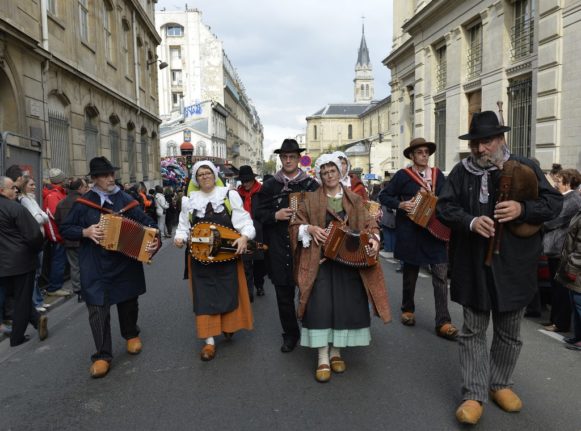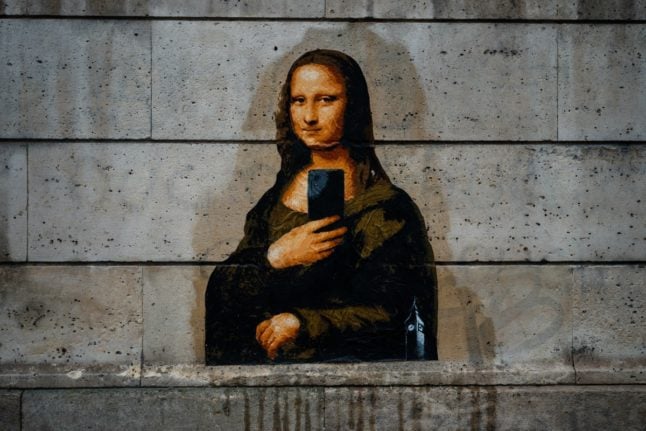Even though the summer holidays (and the fun festivals that came with them) are over, there are still plenty of events to attract visitors before those Christmas markets start opening in November.
Festival du Film Britannique – September 27th to October 1st
Also known as the British Film Festival of Dinard, the festival takes place at arguably one of the most British of French seaside resorts.
The six films in competition this year include Girl – about a mother-daughter duo who move back to Glasgow; Scrapper, about a child who loses her mother and unexpectedly is introduced to someone who calls himself her father; Silent Roar, about a teenager whose father goes missing at sea; Silver Haze, about a young nurse who finds herself falling in love with one of her patients; The Effects of Lying, a dark comedy exploring a family’s secrets; and The Trouble with Jessica, about a series of unfortunate events following one couple’s attempts to rid themselves of their financial troubles.
For more information click here
Atlantique Jazz Festival – October 6th to 22nd
Located in Brest, France’s westernmost city, one of Brittany’s favourite jazz festivals will celebrate its 20th anniversary this year.
With several concerts on the docket, featuring the likes of Five 38 + Immanuel Wilkins Quartet, jazz fans are sure to enjoy music, workshops, and even a conference focused on female jazz composers.
More information here.
The Fête des Vendanges – October 11th to 15th
Also known as the Montmartre grape harvest festival – the fête des vendages de Montmartre is an annual celebration to commemorate the harvesting of grapes from the Clos Montmartre – an urban vineyard located on the slopes of the Montmartre hills in Paris’ 18th arrondisement.
This is one of Paris’ most popular public events, and it involves five days of gastronomy, wine tasting, and grape picking.
Fête du Piment – October 28th to October 29th
Are you a fan of spicy food or chilli peppers? If so, this festival is the one for you. Though it takes place in France’s Basque country, as the picturesque town of Espelette celebrates the pepper that has made it world famous. For more information click here.
Lumière film festival – October 14th to 22nd
Not to be confused with the Fête des Lumières, which also takes place in Lyon (but in December), the Lumière Film Festival is an annual film festival held each October in the French city of Lyon. The festival is named in honour of the Lumière Brothers, who are credited with inventing cinema in 1895.
Salon du chocolat – October 28th to November 1st
You love Paris. You love chocolate. Then you need to be in Paris at the end of October for its annual chocolate fair – when over 150,000 chocolatiers, pastry chefs, confectioners and professionals from the chocolate industry, as well as producing countries, great chefs, designers and cocoa experts get together show off their skills and knowledge. It takes place at the Parc Expo at the Porte de Versailes. For more information, click here.
Armistice Day parades – November 11th
November 11th is a public holiday across much of the western world, recognising the end of World War I. In France, it is the day where towns and cities host parades and wreaths are laid at the war memorials. Virtually every commune in France has a war memorial listing the men from the local area who died for their country (mort pour le patrie).
In Paris, the French president lays a wreath at the Tomb of the Unknown soldier at the Arc de Triomphe.
Dijon International Gastronomy Fair – October 31st to November 11th
Each year, the International Gastronomy fair draws a crowd of over 200,000 people to Dijon, the heart of Burgundy. It features hundreds of booths from both amateur and professional chefs, with plenty of dishes to try for free. The event also includes cooking demonstrations, so you can learn delicious recipes from around the world.
Normal priced tickets are just €6.50, more information here.
Beaujolais Nouveau Day – Thursday, November 16th
Who cares if it’s nothing more than a clever marketing ploy – the third Thursday of every November is a celebration for wine lovers, as the year’s Beaujolais Nouveau is released in a party atmosphere from Beaujeu to Lyon via Villefranche-Sur-Saône… Find out more about the ‘Beaujolais Nouveau’ here.
What about Halloween?
Unfortunately, Halloween is not very widely celebrated in France, but it has become more common in recent years. Around the end of October, you will notice supermarkets selling candy and other festive items, but trick-or-treating is not the norm.
If you are looking for an official, organised event, you might consider going to the “Disney Halloween Festival.” During the festivities, the ‘villains’ take over the park, which is fully decorated for Halloween. When you enter the park, you’ll be greeted by smiling scarecrows with pumpkins on their heads, lanterns lighting up the park, and characters in ‘scary’ (kid-friendly) costumes.
During the actual Halloween weekend, the park hosts dedicated soirées. Tickets can be expensive, usually going for more than €70 a person.
Another option, particularly if you have older kids looking for a scarier Halloween, might be Parc Asterix. Each year, usually for the entirety of the month of October, the park is decked out in autumn colours with pumpkins, corn, and even straw bales. If you want to take younger children, you can go to the ‘Petit frisson’ (small scare) section.




 Please whitelist us to continue reading.
Please whitelist us to continue reading.
Member comments